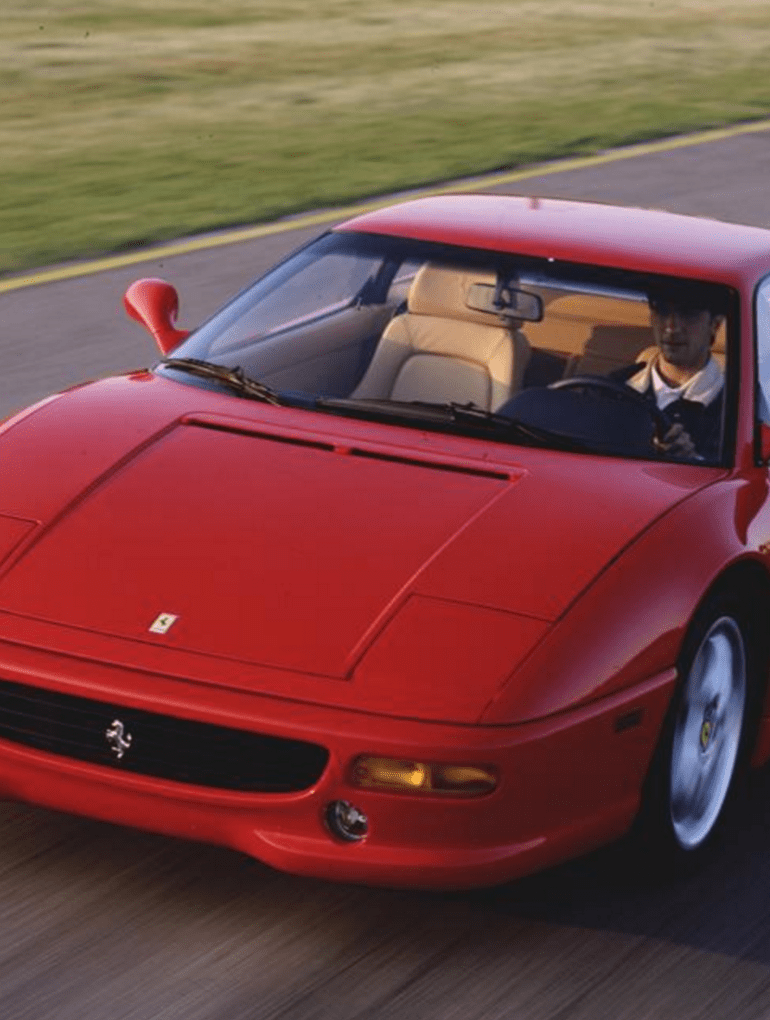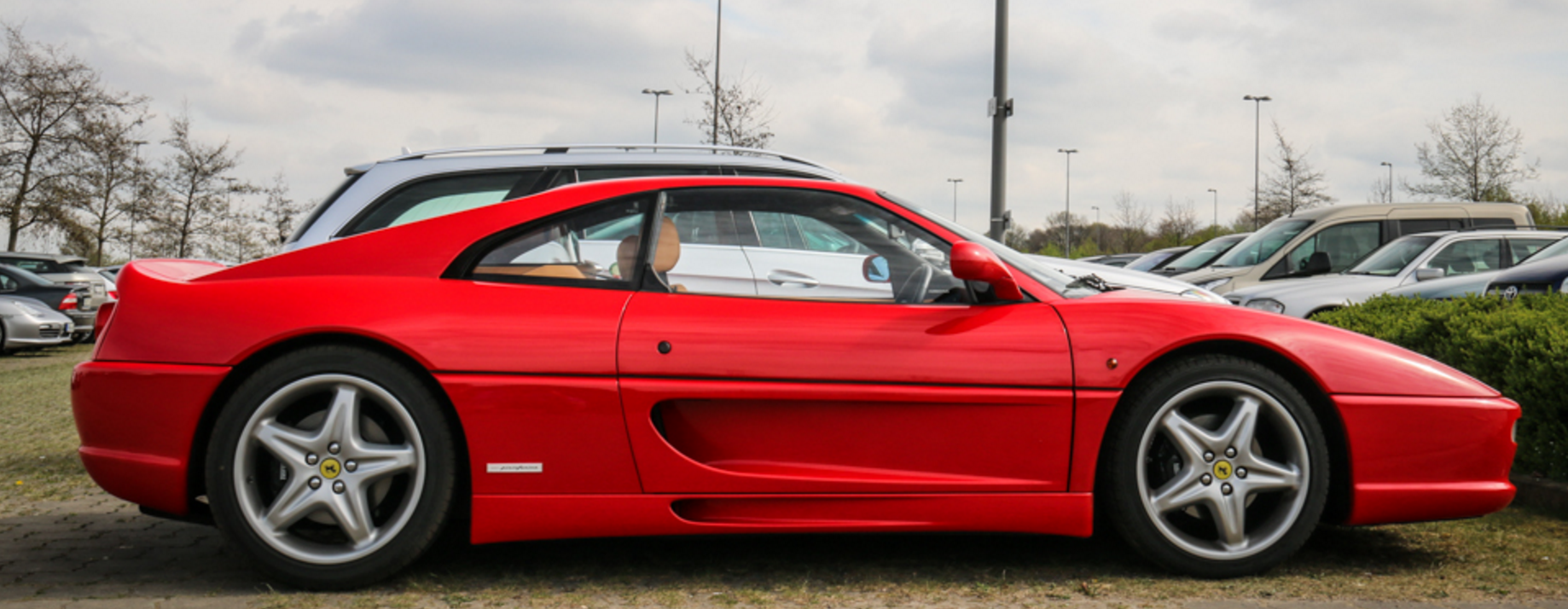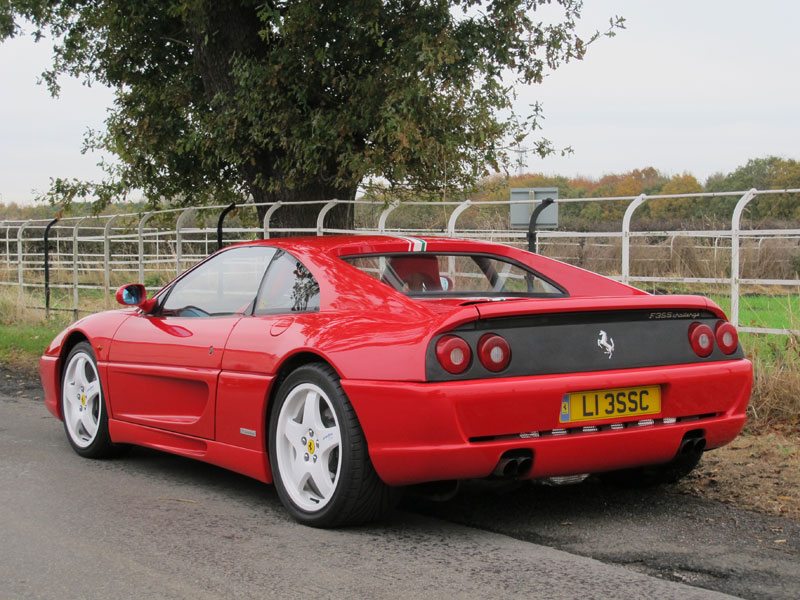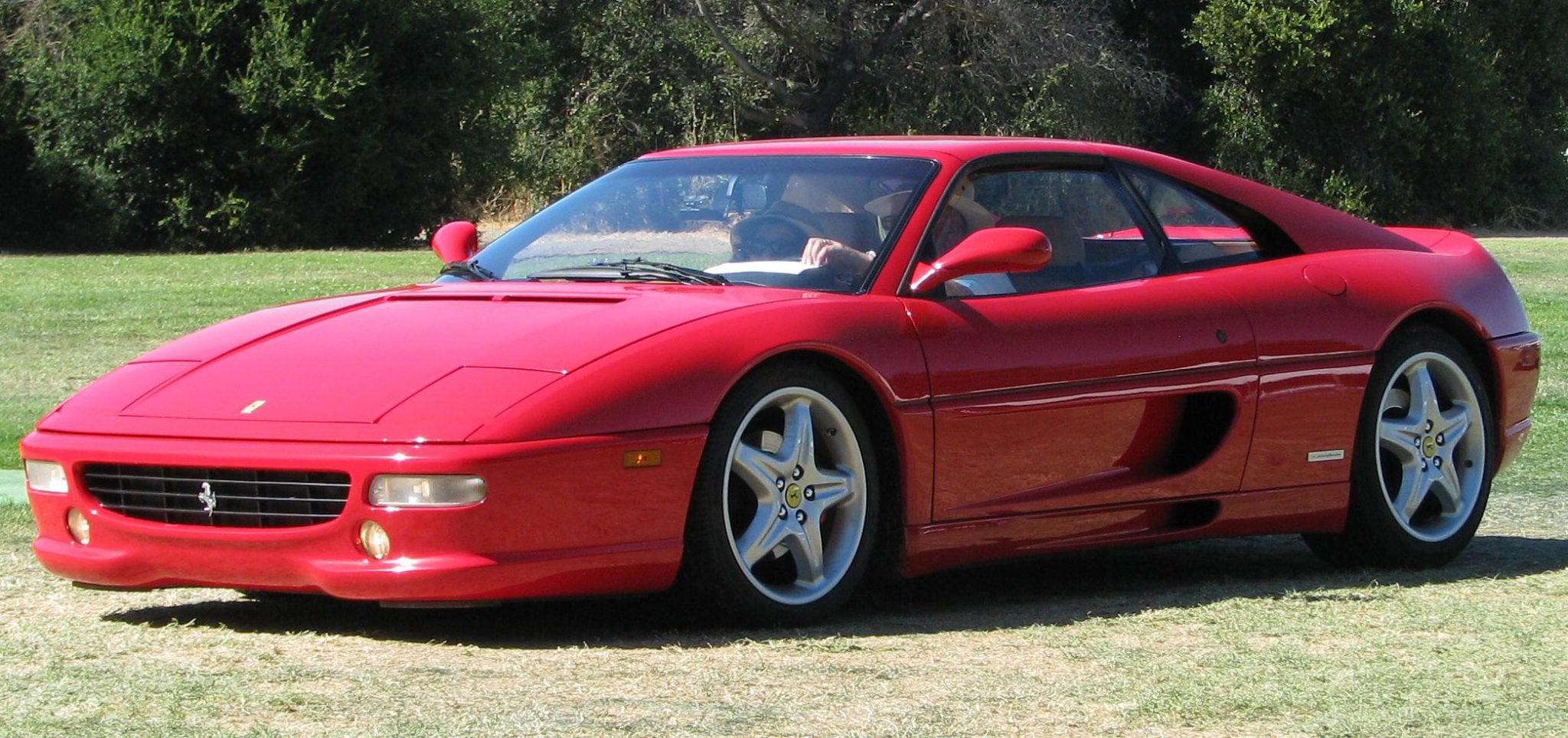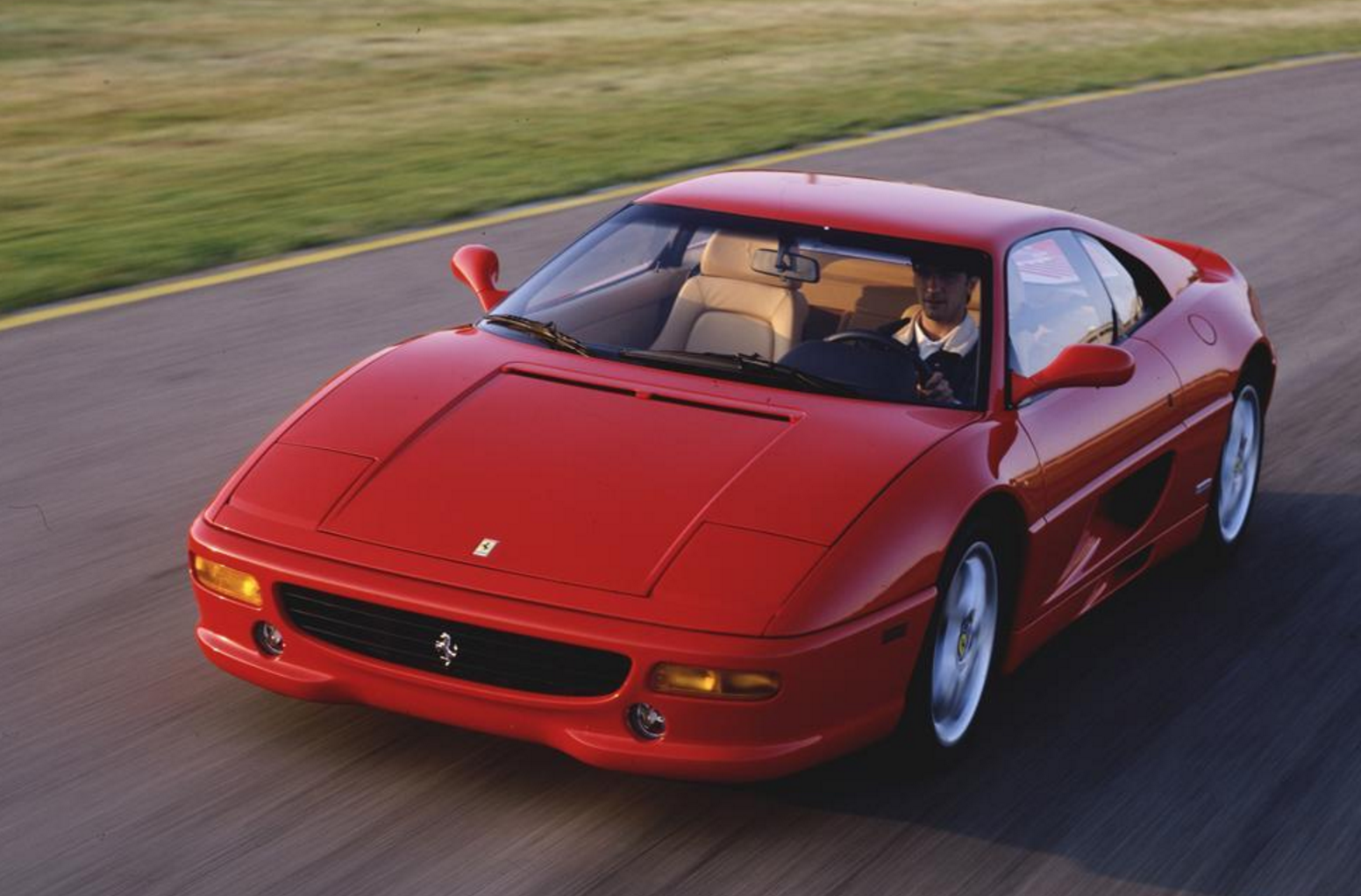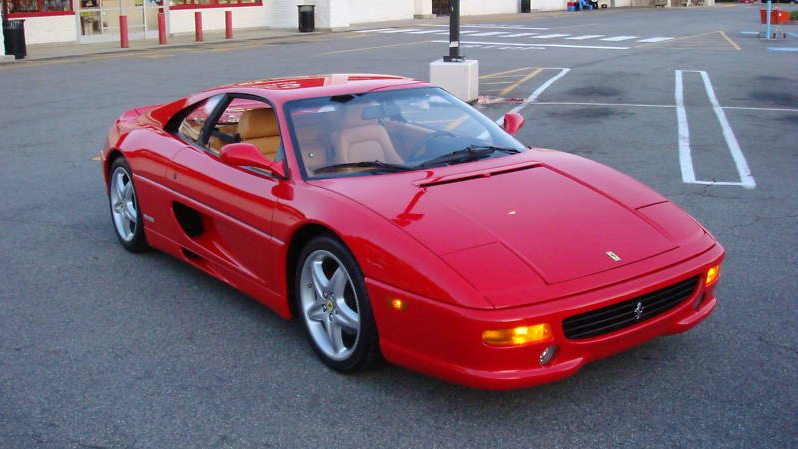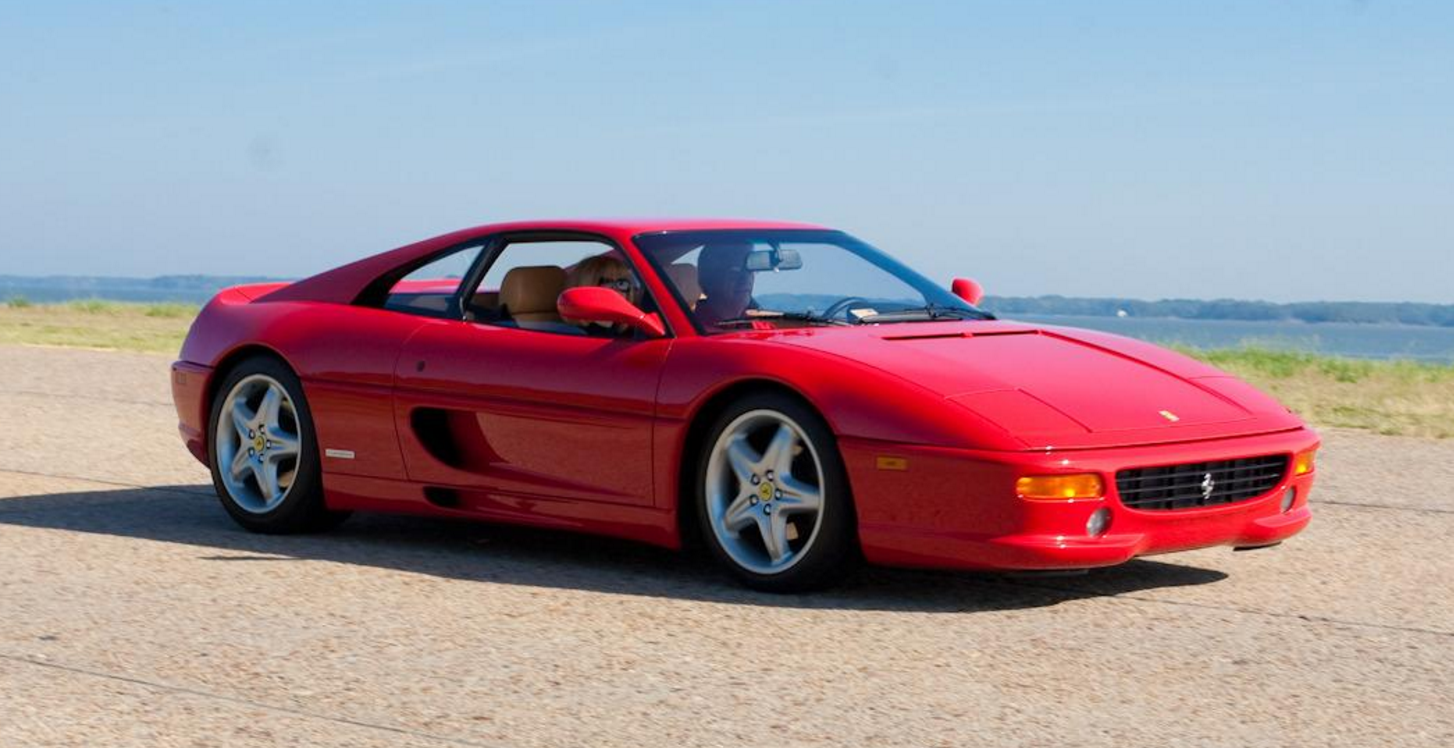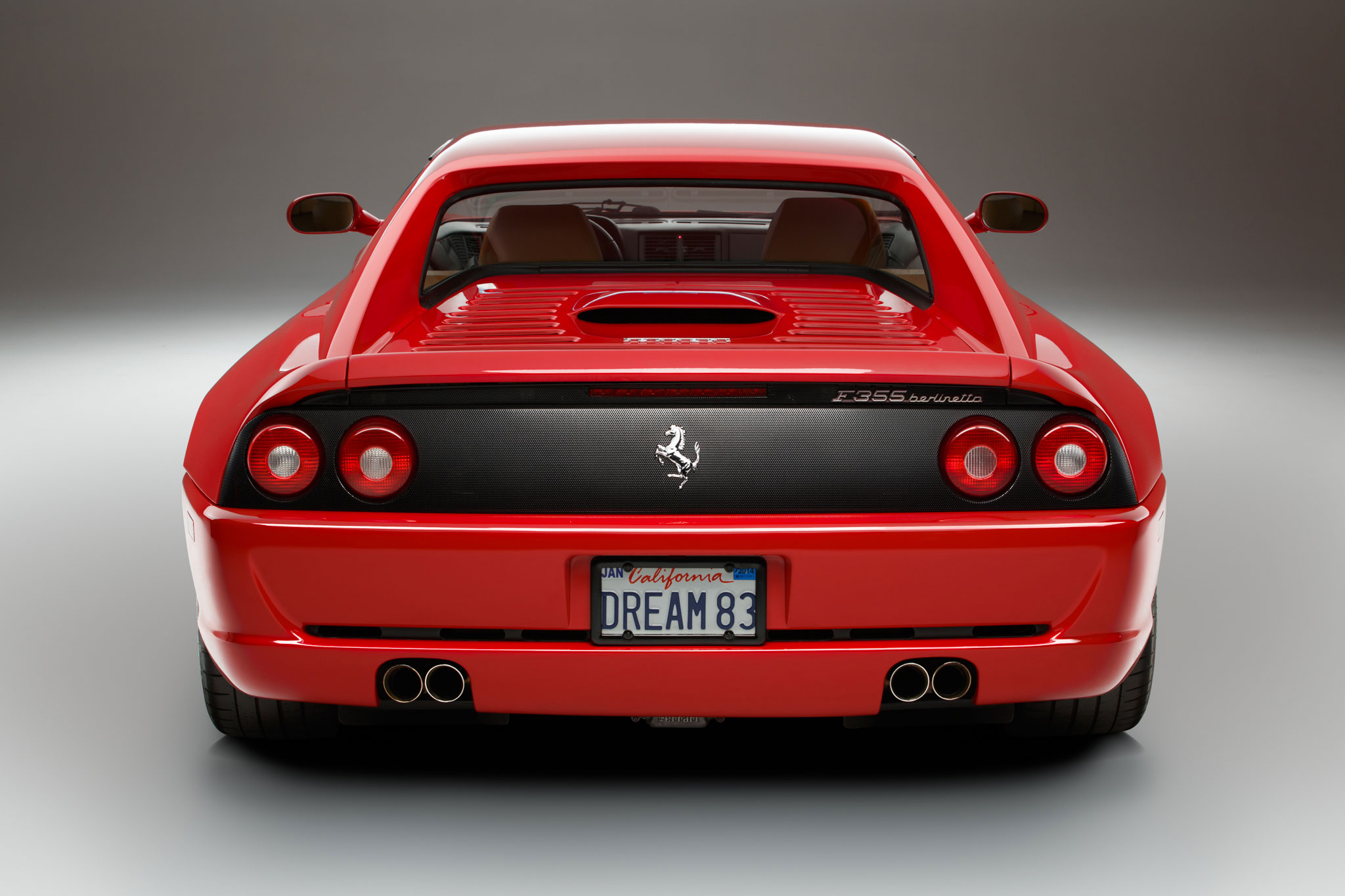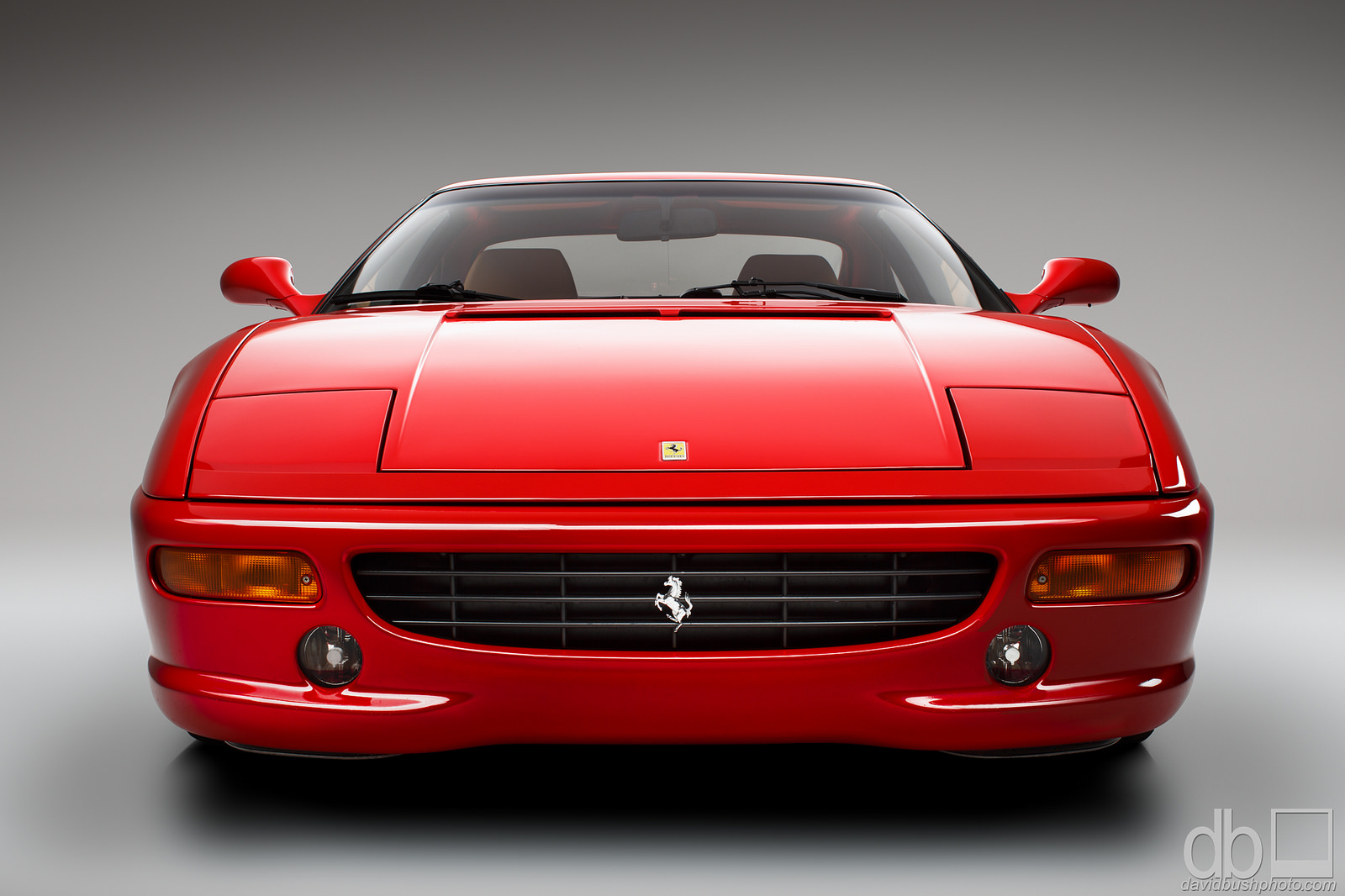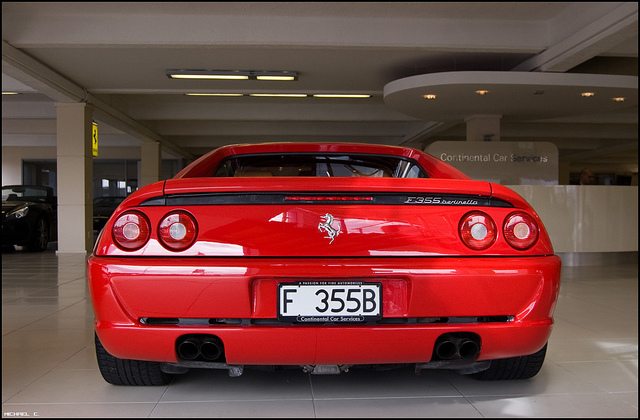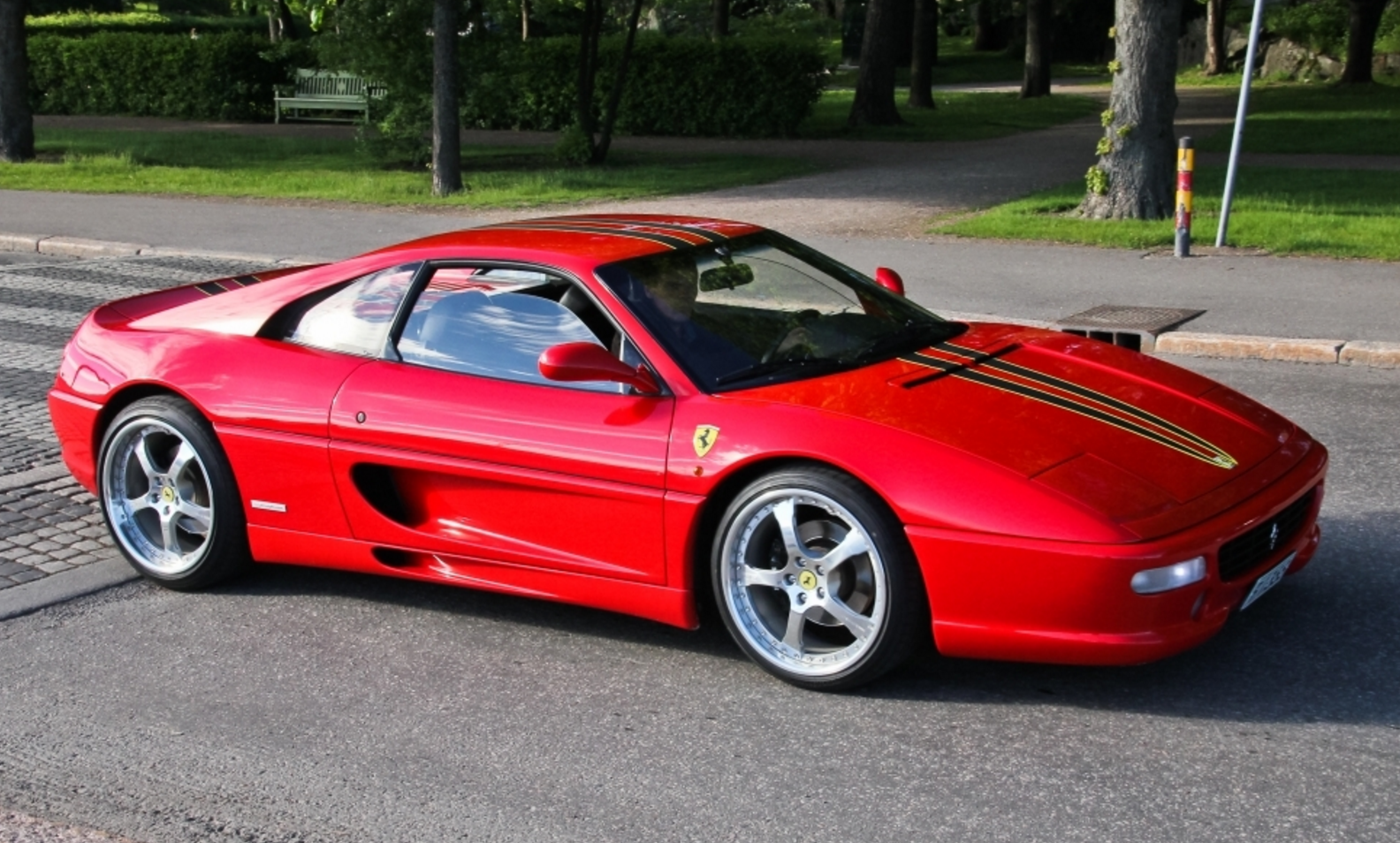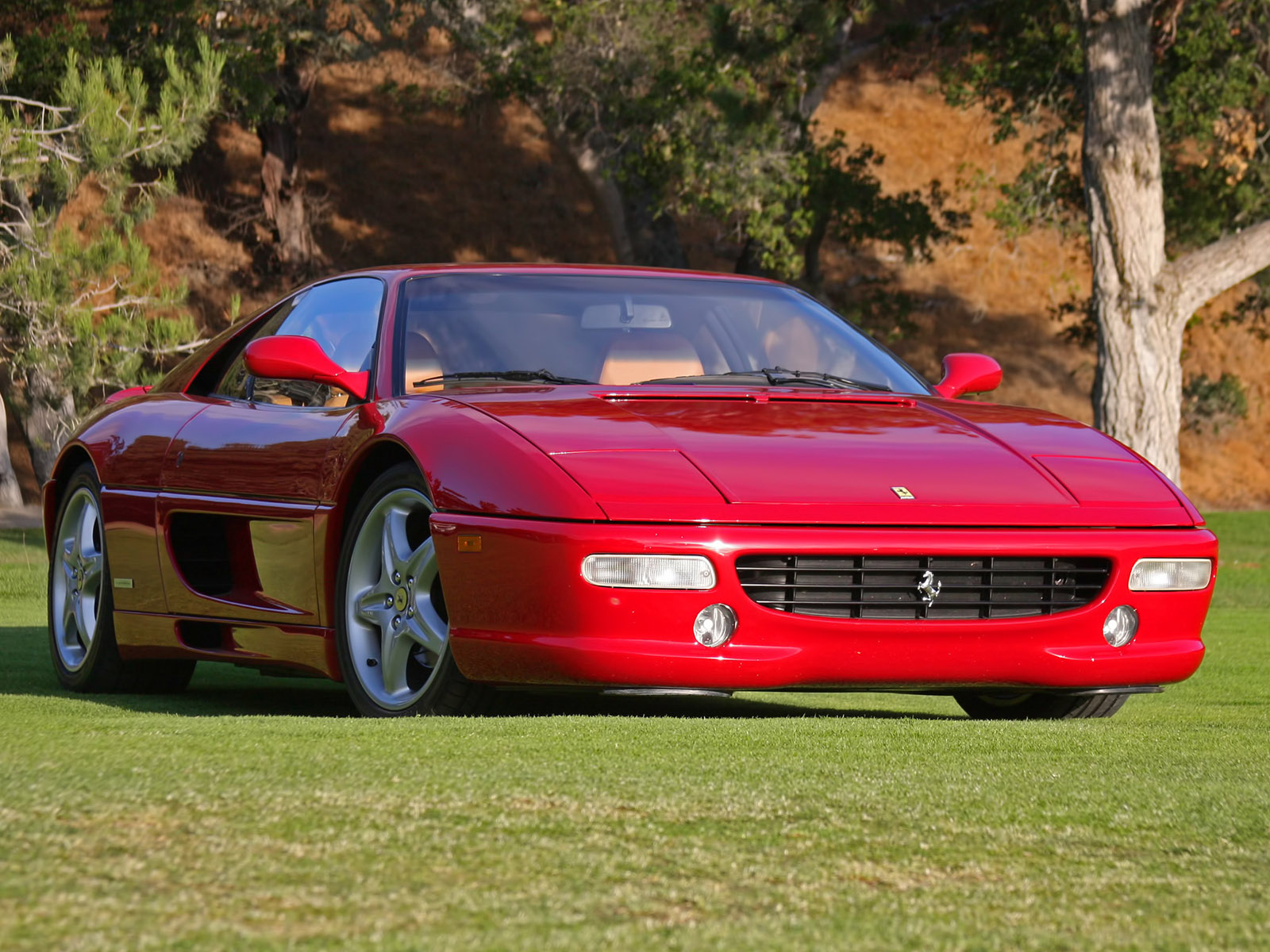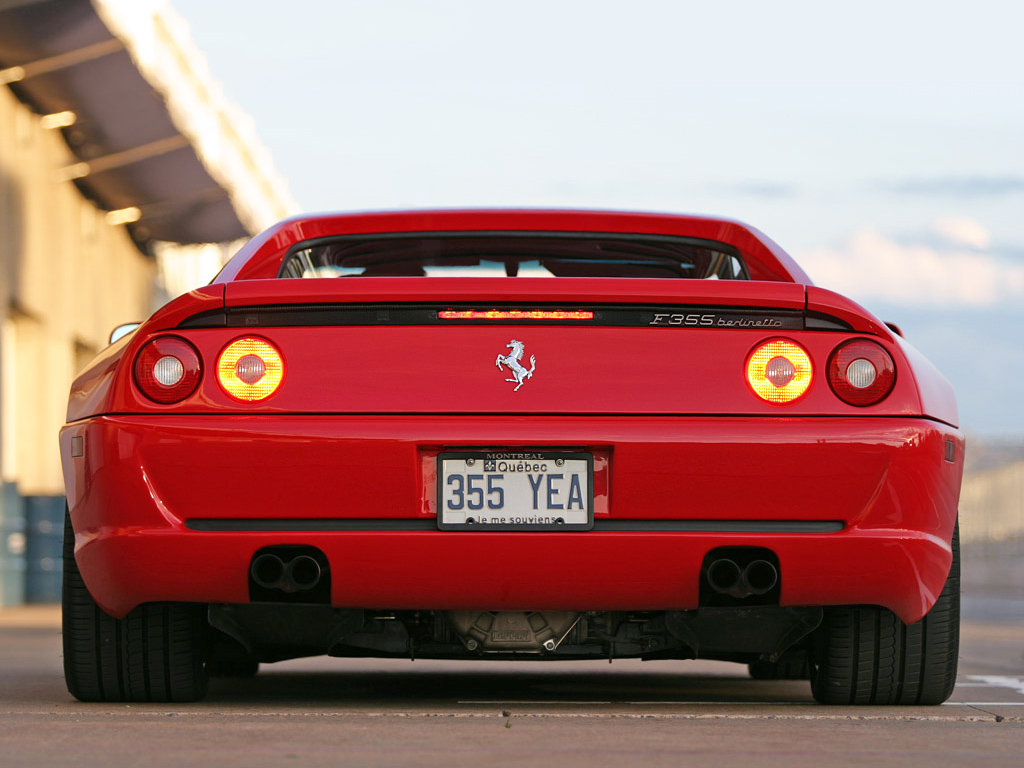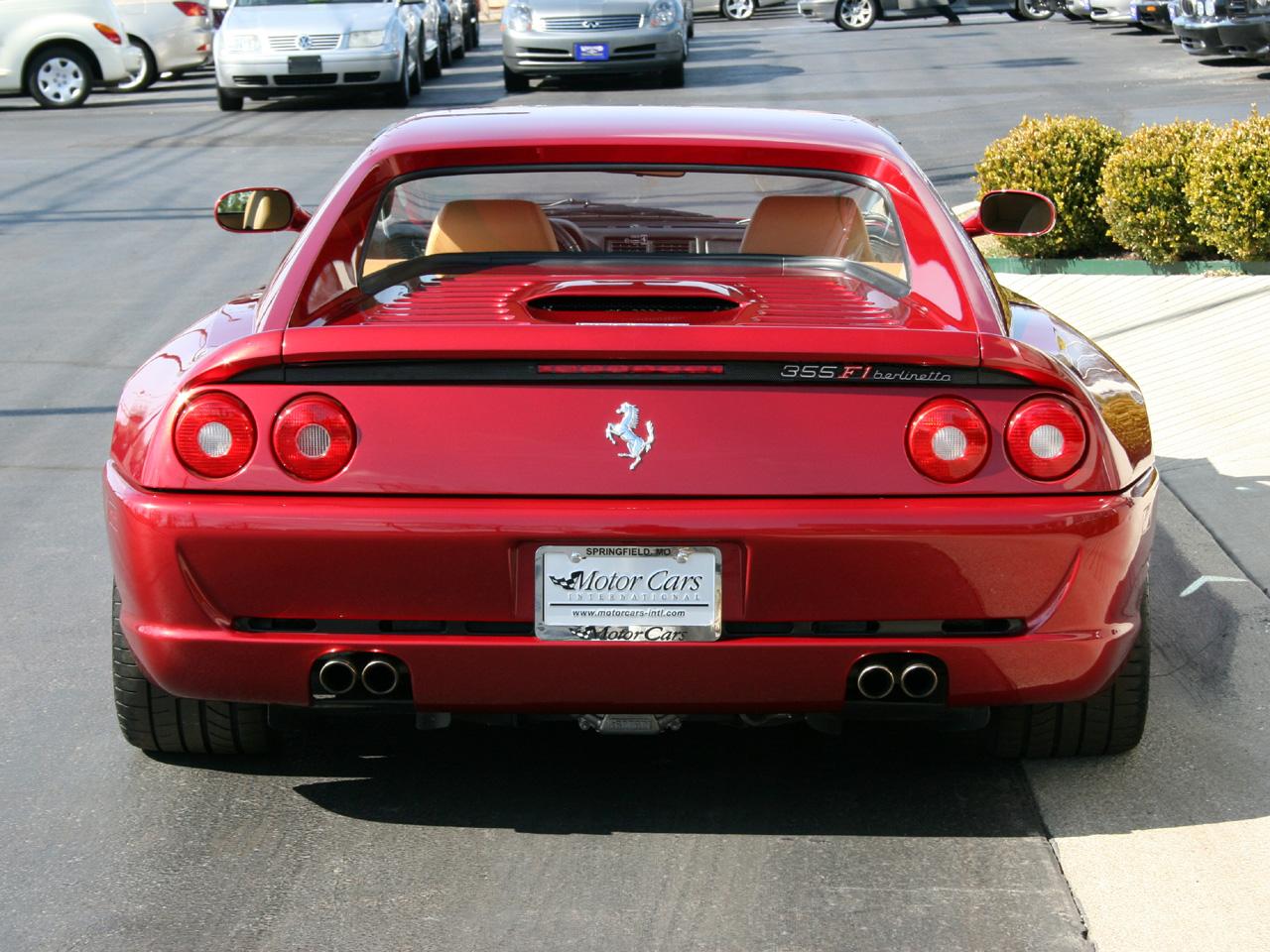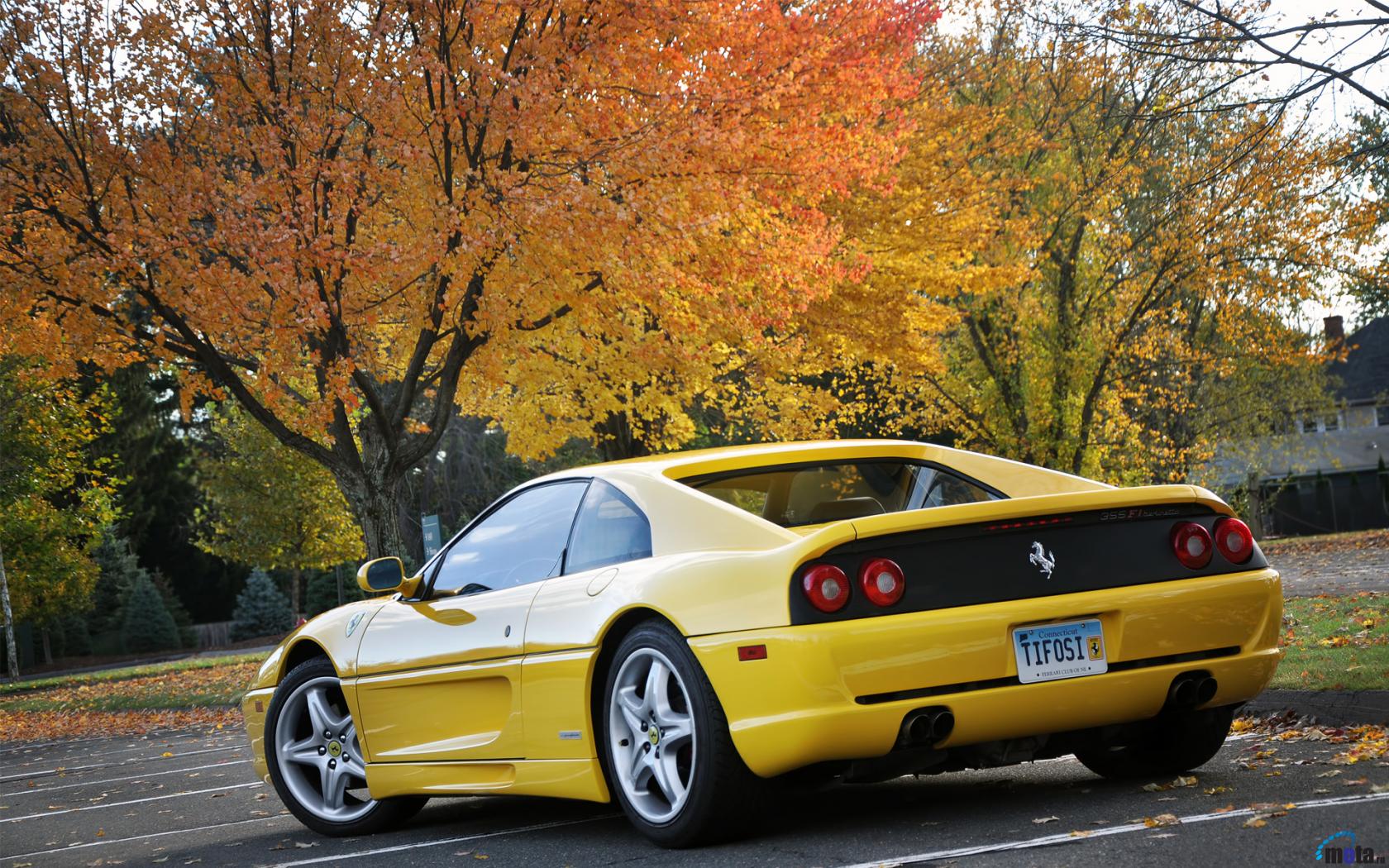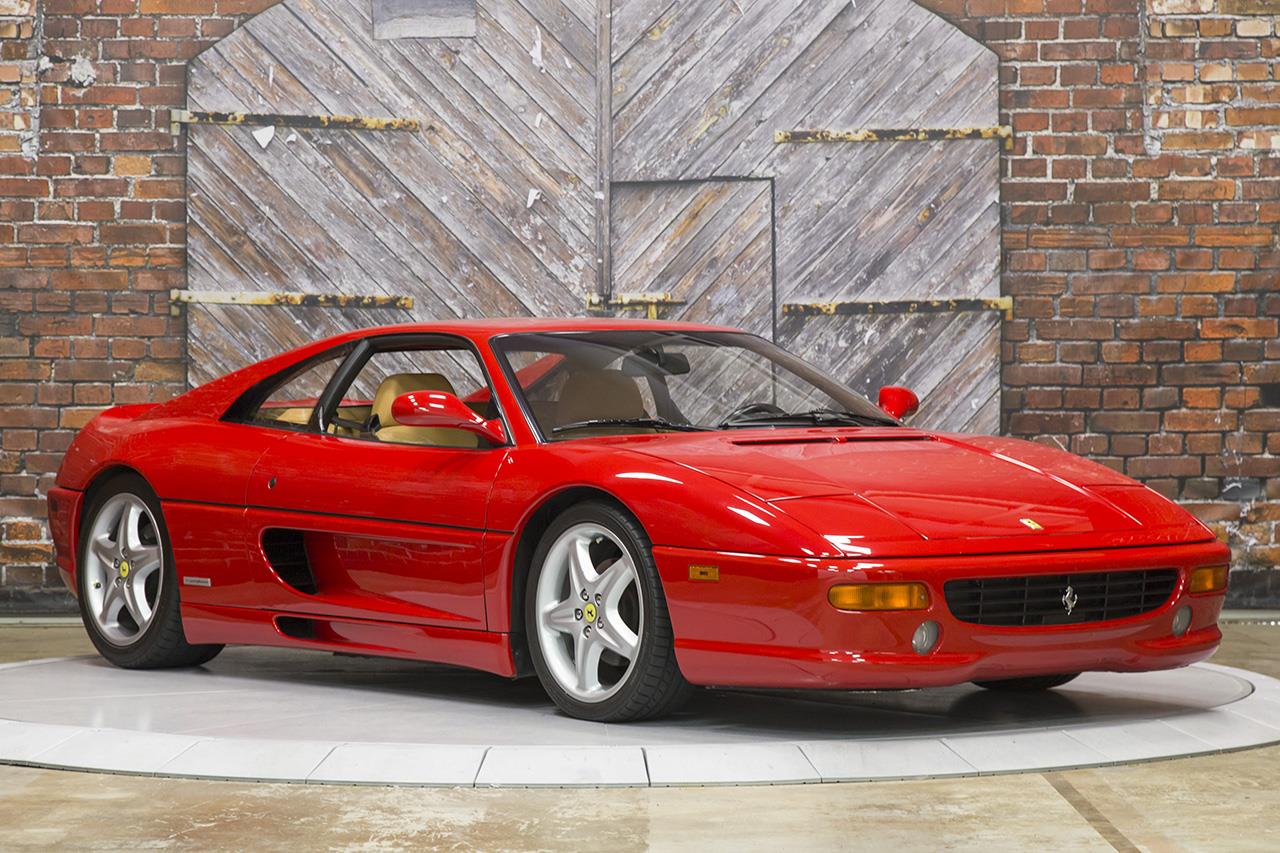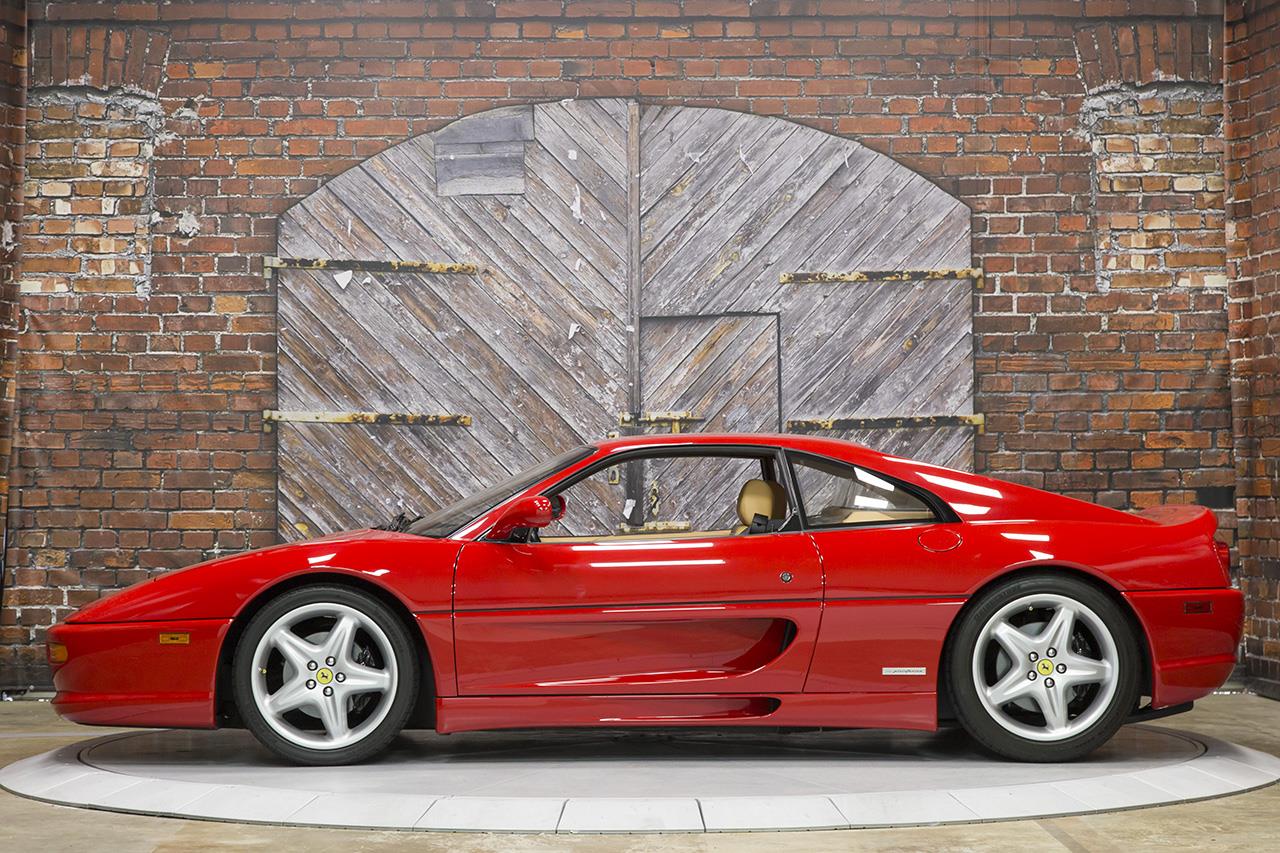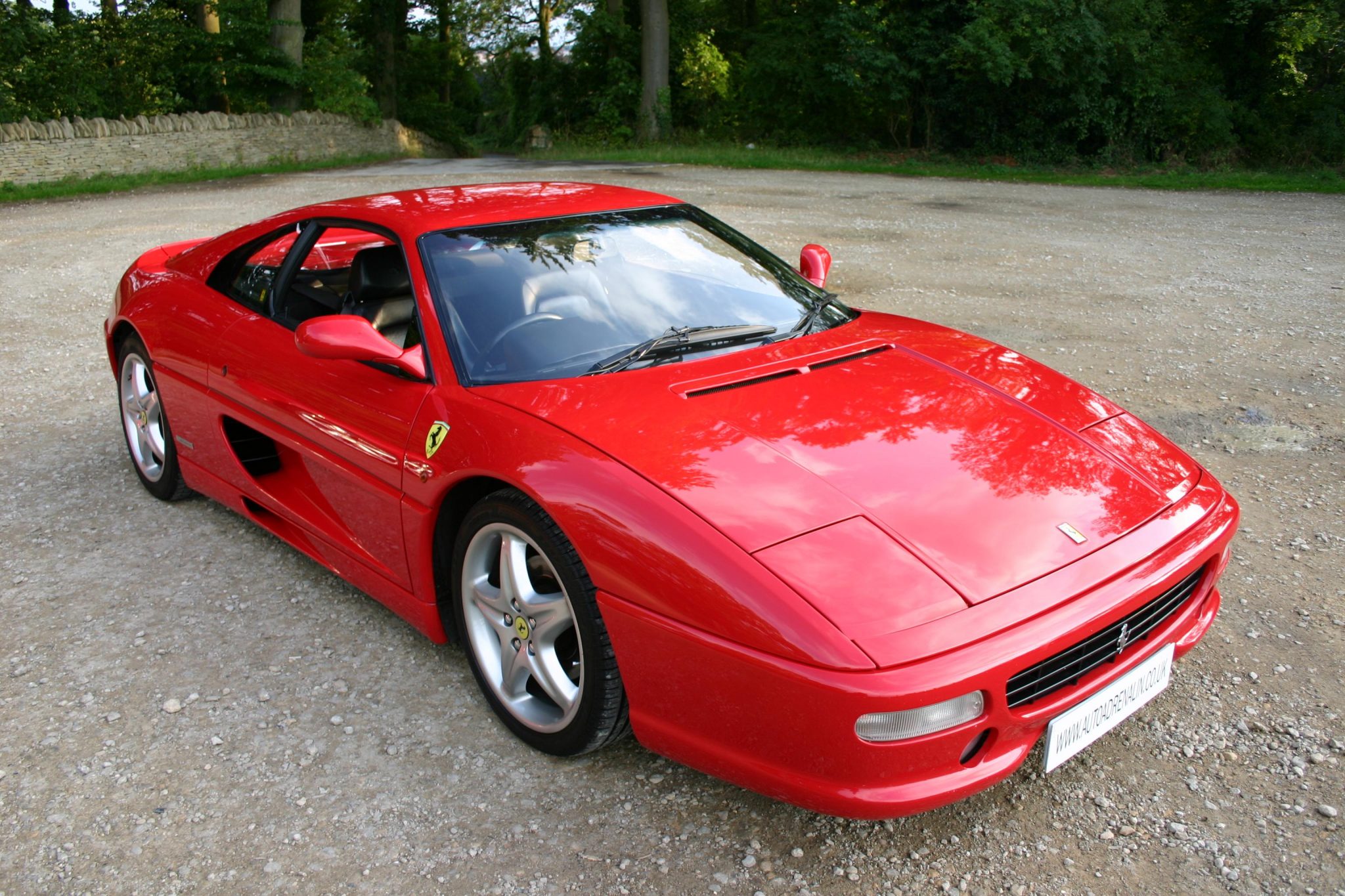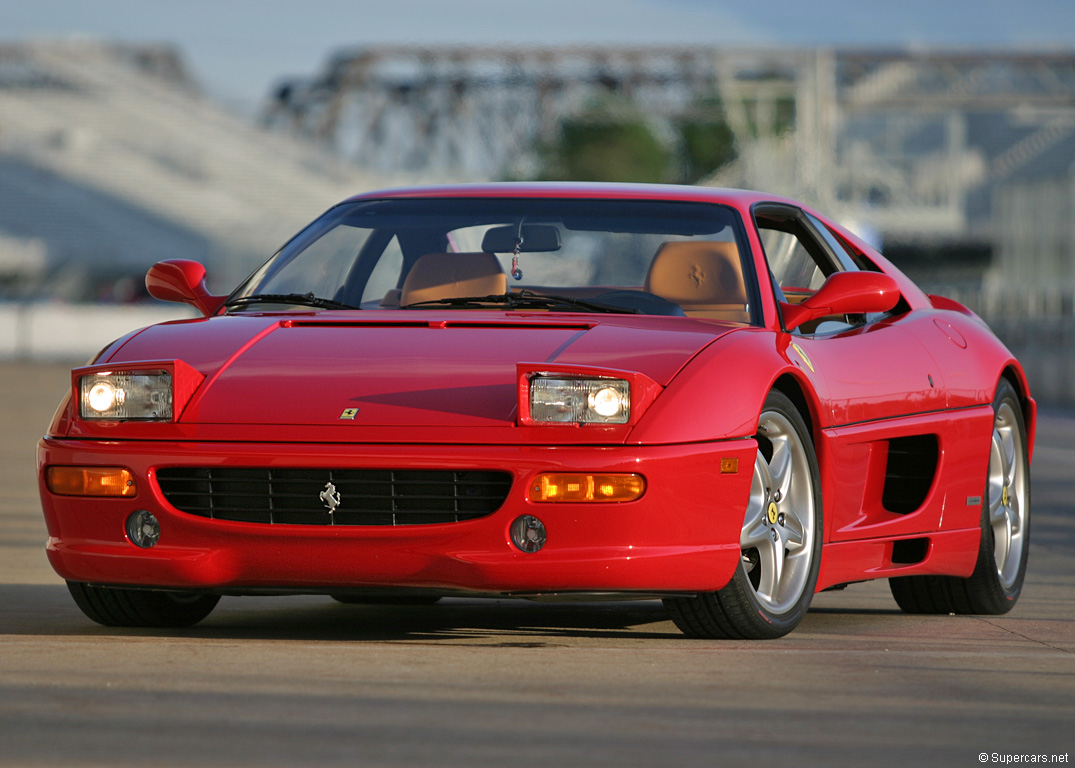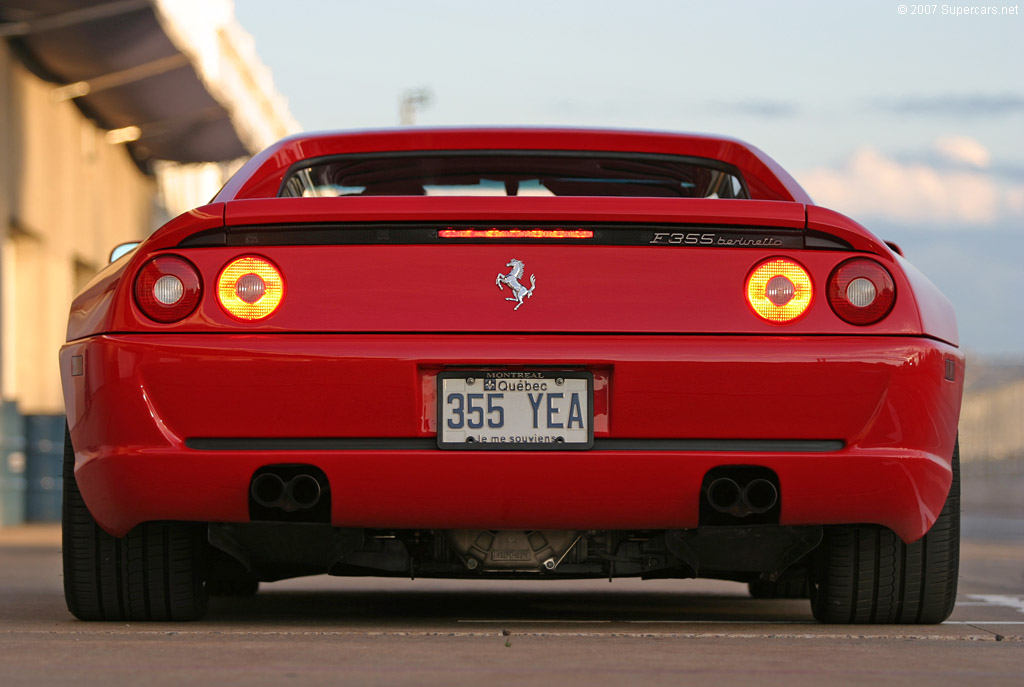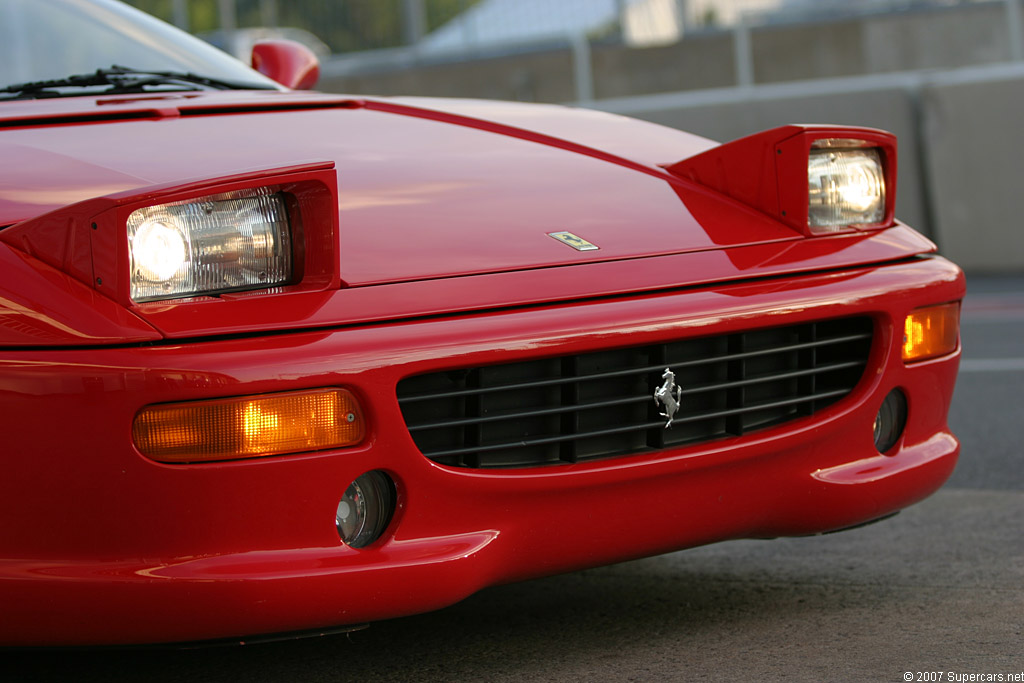Ferrari F355 Berlinetta
Built as Ferrari’s entry level supercar, the F355 followed the 308, 328 and 348 as a cheaper alternative to their V12 models. Ferrari President Luca di Montezemolo encouraged the design, engineering and marketing teams at Ferrari to create something entirely new, exciting and completely different from the 348.
The resultant F355 was a major hit: its full body undertray was highlighted as a performance benchmark upon release and orders piled in faster than Ferrari could fill them. Press reviews were favorable and generally appreciated the 25% percent increase in horsepower, as well as Pininfarina’s gracious styling.
The F355 was built from May 1994 and was offered either as a Berlinetta coupe or targa top GTS with a removable metal top that could be stowed in the front truck. All F355’s had a flat-plane crank V8 that was mounted longitudinally in the center of the car. At the time, it was one of the most powerful normally aspirated engines, making 380bhp at 8250rpm from 3496cc. This was possible thanks to new five valve cylinder heads as well as lightweight engine components such as titanium connecting rods and forged alloy pistons.
One main focus for the Ferrari engineers was to improve the handling characteristics over the 348, especially in maintaining control near the limits of adhesion. New electronic dampers were fitted that calculated road speed, brake pressure, suspension load and steering. With such a suspension and more power on tap, Ferrari boasted that the F355 was seven seconds faster around their Fiorano test track compared to the older 348.
Pininfarina was responsible for the body design which abandoned the Testarossa’s side strakes and straight lines in favor of sensuous lines. Despite having nearly the same dimensions as the 348, the F355 was entirely new. Most of the body was shaped in Pininfarina’s wind tunnel, including its fibreglass bottom under tray. The fastback profile of the car was accentuated by rear buttresses, while the rear kicked up like the classic Ferrari 250 GTO, complete with traditionally shaped rear lights.
Many options were available for the F355, the most dramatic of which was the Fiorano handling package that lowered the entire car, added a firmer suspension and widened the track. Options included a mesh rear grille, sports seats and four-point harnesses.
By 1995, Nicola Larini helped develop a challenge series that followed the successful 348 Challenge Trophy. It was a one-model race that was held throughout Europe and became hotly contested since each car was identically prepared by Ferrari before being sold.
In 1997, a new electro-hydraulic gearbox became available known as the F1 transmission. It was offered at a time when very few cars were equipped as such; only Alpina and Porsche were offering a similar gear change. That same year, a Spider version was launched on Rodeo Drive in Beverly Hills that had a electronically powered top that retracted beneath a canvas cover.
The F355 was replaced by the 360 Modena which upgraded the ‘junior’ Ferrari in many ways, the most dramatic of which was an all-aluminum chassis structure and new fixed headlights. This meant the F355 was the last Ferrari to use retractable headlights which was primarily a cosmetic feature. To end the model, Ferrari built 100 ‘Serie Fiorano’ cars which had a handling package, challenge grill, carbon-fiber inserts, a suede-covered steering wheel and were identified by a plaque on the dashboard. Both the Serie Fiorano and 360 Modena were launched at the 1999 Geneva Auto Show after 11 200 F355s had been built by the factory.
Specs & Performance
| submitted by | Richard Owen |
| type | Series Production Car |
| production years | 1994 – 1999 |
| built at | Maranello, Italy |
| price $ | $130,000 |
| engine | Aluminum Alloy V8 |
| position | Mid, Longitudinal |
| aspiration | Natural |
| valvetrain | DOHC 5 Valves / Cyl |
| fuel feed | Bosch Motronic 2.7 Injection |
| displacement | 3496 cc / 213.3 in³ |
| bore | 85.0 mm / 3.35 in |
| stroke | 77.0 mm / 3.03 in |
| compression | 11.0:1 |
| power | 283.4 kw / 380.0 bhp @ 8250 rpm |
| specific output | 108.7 bhp per litre |
| bhp/weight | 281.48 bhp per tonne |
| torque | 667.1 nm / 492.0 ft lbs @ 6000 rpm |
| redline | 8500 |
| body / frame | Steel & Aluminum Body w/Rear Subframe |
| driven wheels | RWD |
| front tires | F 225/40ZR-18 |
| rear tires | R 265/40ZR-18 |
| front brakes | Vented Discs w/Vacuum Assist & ABS |
| rear brakes | Vented Discs w/Vacuum Assist & ABS |
| front wheels | F 45.7 x 19.0 cm / 18.0 x 7.5 in |
| rear wheels | R 45.7 x 25.4 cm / 18.0 x 10.0 in |
| steering | Rack & Pinion w/Power Assist |
| f suspension | Double Wishbones w/Coil Springs over Dampers, Anti-Roll Bar |
| r suspension | Double Wishbones w/Coil Springs over Dampers, Anti-Roll Bar |
| curb weight | 1350 kg / 2976 lbs |
| wheelbase | 2450 mm / 96.5 in |
| front track | 1514 mm / 59.6 in |
| rear track | 1614 mm / 63.5 in |
| length | 4250 mm / 167.3 in |
| width | 1900 mm / 74.8 in |
| height | 1170 mm / 46.1 in |
| transmission | 6-Speed Manual |
| gear ratios | 3.07:1, 2.16:1, 1.61:1, 1.27:1, 1.03:1, 0.84:1 |
| final drive | 4.35:1 |
| top speed | ~294.5 kph / 183.0 mph |
| 0 – 60 mph | ~4.9 seconds |
| 0 – 100 mph | ~11.3 seconds |
| 0 – 1/4 mile | ~13.3 seconds |
Pictures
Videos


